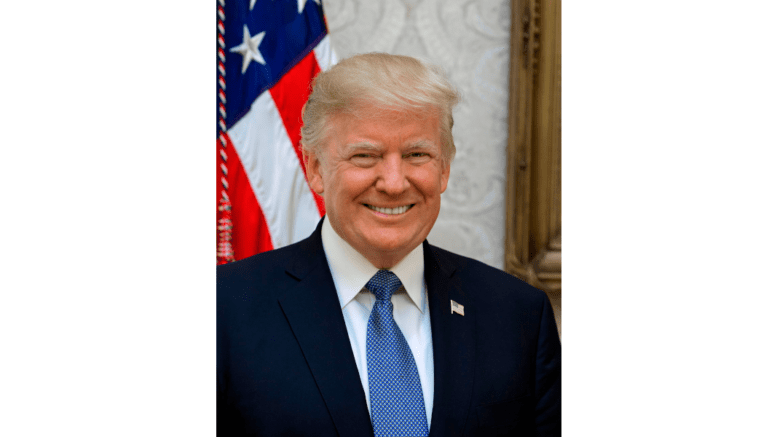by Marya T. Mtshali, Harvard University, [This article first appeared in The Conversation, republished with permission]
Americans who heard former President Donald Trump claim that Vice President Kamala Harris previously identified as “not Black” in a July 2024 interview may wonder why he continuously emphasized former President Barack Obama’s blackness during his first presidential campaign.
As a scholar focused on race and gender issues, I recognize that these seemingly inconsistent definitions of blackness are not inconsistent at all. They demonstrate a consistent position on whiteness.
In both cases, Trump implies that the race of his opponent is all voters need to know to determine their characters. It is an ideology that normalizes the dominance and privilege of white Americans within a racial hierarchy.
Making whiteness great again
In the American imagination, white people are often perceived as being more authentically American than other racial groups.
Additionally, Trump and some of his followers see many of America’s strides on civil rights as detrimental to white people. Trump has said that “anti-white feeling” is a significant problem in America. And Republican voters, who are overwhelmingly white, are more likely than the general population to view racism as a bigger problem for white people.
Trump has said he believes America was at its best in the 1940s and 1950s. However, Trump’s long-standing inflammatory rhetoric around race — including his recent racist comments degrading Haitian refugees in Springfield, Ohio — do not simply glorify a time immediately before the civil rights era. They recall an older era.
Calls to “Make America Great Again” hearken back to colonialism, when whiteness — particularly white, male power — was at its peak. The period from 1500 to the 1960s was a time when white men could exercise control over people of color by racially classifying their bodies. And they protected whiteness by passing laws that declared “one drop” of Black blood as enough to declare someone Black.
Whiteness is property, as the legal scholar Cheryl Hines has argued. It’s an asset for those who possess it. It offers benefits like white privilege and the idea of being white as moral and superior.
One-drop statutes, such as the Virginia Racial Integrity Act of 1924, attempted to scientifically define who was Black based on how much African ancestry a person had. Passed in dozens of states in the 20th century, these laws were about maintaining white purity.
More specifically, one-drop statutes reflected a fear that people who were considered white in terms of their appearance but had Black ancestry could reproduce with other white people. This, in turn, would result in the supposed degeneration of the white race.
These laws attempted to legally define Blackness.
Power and dominance
Harris and Obama, the children of immigrants, both have mixed-race backgrounds. Harris is the child of a Black Jamaican father and an Indian mother. Obama is the son of a Black Kenyan father and a white American mother.
However, Trump insists that Harris was “Indian all the way,” while Obama was a “Black president.” For me, this perspective reveals another aspect of Trump’s racial thinking: He appears to believe in the impenetrability and power of whiteness.
Trump sees Harris as capable of dancing back and forth between being Indian and being Black. Yet he has never implied that Obama can dance between being Black and being white.
In a society that often ties physical characteristics to racial identity, many people might find it difficult to imagine Obama as identifying as white. That’s because our society associates his skin tone and hair texture with Blackness.
However, I argue that the inability to view this hypothetical racial dance as possible for Harris and not for Obama is tied to white supremacist beliefs.
These beliefs defend whiteness as being imbued with dominance over other racial groups. This power is reflected in the ability to define the race of others, regardless of how they may identify themselves. And it is reflected in the desire to also limit who can count as white.
Trump does both of those things.
A foil to white identity
“She was always of Indian heritage, and she was only promoting Indian heritage. I didn’t know she was Black until a number of years ago, when she happened to turn Black, and now she wants to be known as Black,” Trump said in July at a gathering of Black journalists.
He added: “So I don’t know, is she Indian or is she Black? I respect either one, but she obviously doesn’t, because she was Indian all the way, and then all of a sudden she made a turn and she went – she became a Black person.”
By suggesting that Harris has strategically identified as Black for political gain, Trump implies that there’s a political advantage to being Black in America.
This notion aligns with the racist belief, fueled by white racial resentment, that Black Americans are afforded privileges over whites and Asian Americans.
The sociologist Arlie Hochschild has shown that many white Trump supporters believe circumstances in America have gotten worse for whites in recent decades. They believe many of the gains for people of color — affirmative action and other diversity policies — have been at the expense of the rights of white people.
Simultaneously, Trump’s comments emphasize his own whiteness by using Harris’ and Obama’s race as a foil to his white identity. Research on the construction of race in America shows that whiteness is devoid of meaning without something to define itself against.
For white people who feel many things have been taken away from them in an increasingly multiracial America, Trump is their warrior. He campaigns to protect the white population and culture of America.
Marya T. Mtshali, Lecturer in Studies in Women, Gender, and Sexuality, Harvard University
This article is republished from The Conversation under a Creative Commons license. Read the original article.
